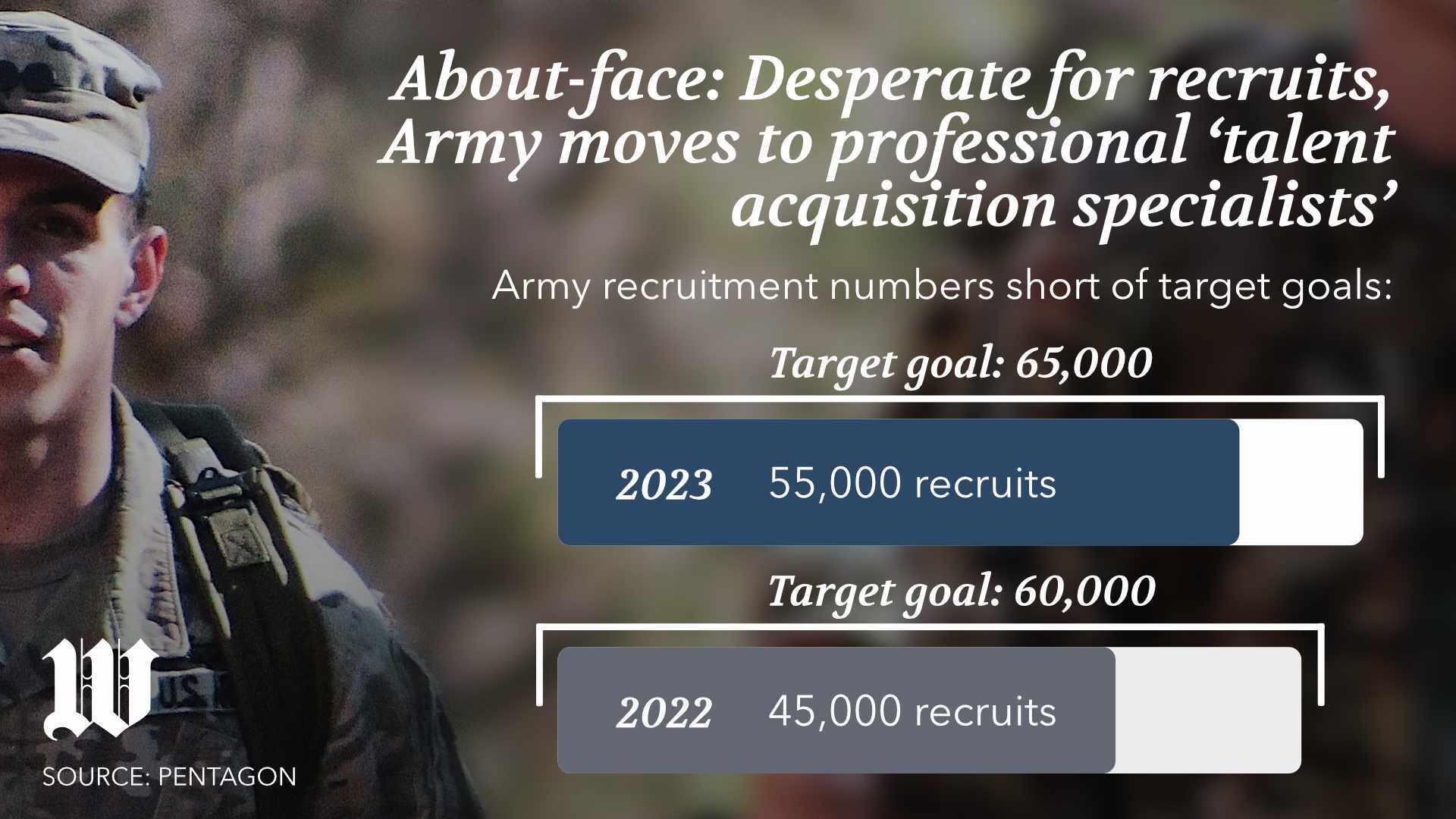Pentagon officials on Tuesday announced an overhaul of the military’s approach to enticing young Americans to enlist after the Army once again fell thousands short of meeting its recruiting goal for the year.
Secretary of the Army Christine Wormuth and Gen. Randy George, the chief of staff, detailed “sweeping changes” to how the nation’s senior military service will identify and recruit talent.
Among the first changes: replacing the officers on temporary assignment as recruiters with a new team of permanent, full-time “talent acquisition specialists.”
“The job market has changed very significantly in the last 20 years,” Ms. Wormuth said at a special Pentagon briefing. “The Army has not changed how we approach that job market, while a lot of our competitors in the private sector have.”
The Army and the other military services are grappling with the most challenging recruiting environment since the end of the draft 50 years ago. In the fiscal year that just ended, the Army brought in about 55,000 recruits — 10,000 short of its goal of 65,000.

“We knew, frankly, that it was going to be tough to make,” Ms. Wormuth said. “But it was important. We needed to send a strong signal to both our recruiting workforce to ‘put the pedal to the metal’ and to show Congress and the public that we were going to push as hard as we can.”
Last year, the Army missed its goal of bringing in 60,000 soldiers by 15,000. It was clear months ago that upending the recruiting status quo would be required, Ms. Wormuth said.
“Just continuing to have the same approach but do it better and harder was not going to get us where we need to be,” she said.
The Army, the largest of the country’s military services, is struggling to meet its needs in a tight labor market. The Navy and the Air Force also fell short of their recruitment goals for the fiscal year that ended Saturday, although the heads of those services said they exceeded projections. The Marine Corps and the tiny Space Force met their enlistment targets, officials said.
Although the Army missed its recruiting goal for the year, a strong retention rate helped maintain its total “end strength” of 452,000 soldiers. Recruiters signed up an additional 4,600 recruits for their delayed entry program, meaning they will undergo basic training over the next year.
Lessons from private sector
The Army recently completed a wide-ranging study of the recruiting environment. It crunched decades’ worth of data and learned what worked for Fortune 500 companies.
Army leaders said some recruiting challenges are beyond their control, such as the declining percentage of young people eligible to join the military. Some changes can begin immediately, and others could take years.
The Army has about 8,000 recruiters. In most cases, they are assigned the duty temporarily from their primary career fields, such as infantry soldier. The new corps of talent acquisition specialists will have only one mission: recruiting.
“One of the needs we identified was creating an increasingly permanent and specialized talent acquisition workforce,” said Gen. George, who called recruiting the service’s most pressing challenge. “This will ensure that our recruiters have the tools, talent and training to reach prospects wherever they are.”
The Army also is creating a permanent warrant officer position for recruiting. Both assignments will align the service with most major companies where personnel recruiting is a specialized, full-time career.
Army recruiters have traditionally relied almost exclusively on high schools to fill the ranks, but that market is shrinking. Today, about half of its potential recruits are high school seniors or recent graduates.
“By 2028, we’re going to get one-third of our new contracts every year from people who have more than a high school education,” Ms. Wormuth said, “but we’re not abandoning the high school market by any means.”
Setting up a card table in the gym won’t be enough for an Army recruiter to succeed. Ms. Wormuth said the service needs to look for potential applicants on computer job sites such as LinkedIn and ZipRecruiter.
“Doing this is going to be a big shift. It’s going to take new training and new tools for our recruiters,” she said. “We want to make sure they have all the resources they need to be successful.”
The head of Army recruiting will be promoted to three-star lieutenant general and have a four-year tour of duty for more continuity. Army Recruiting Command will take charge of the Army Enterprise Marketing Office — the Madison Avenue types who recently reintroduced the service’s venerable “Be All You Can Be” recruiting slogan — and the Cadet Command, which oversees training for Army ROTC.
“We know we have to be agile and we have to adjust — like the Army always does,” Gen. George said.
• Mike Glenn can be reached at mglenn@washingtontimes.com.




Please read our comment policy before commenting.